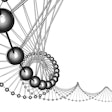
There’s a big difference between listening and simply hearing, but for most us, the sounds of the poultry flock, no matter how hard we try, remain largely unintelligible.
This may be about to change, however, due to work being done at the Georgia Tech Research Institute (GTRI), where researchers have started to identify unique sounds that communicate birds’ well-being.
The initiative may not turn the average poultry farmer into a modern-day Dr. Dolittle, but it could, at least, allow a better understanding of what chicken vocalization may indicate and allow bird care and welfare to be adjusted accordingly.
Using the “Growout Monitoring System,” the Georgia Tech team has characterized when birds are under stress due to sickness or adverse environmental conditions inside the house. The machine learning-based system comprises a data collection station and interconnected recording microphones, and uses algorithms to analyze the audio data, so training the system to characterize chicken vocalizations.
Learning curve
In several studies, data was collected under normal and stressed – temperatures raised 10 degrees above normal – conditions. Analyses revealed that a change can be detected in vocalizations due to temperature changes.
Studies also investigated the relationship of vocalization to infectious bronchitis and laryngotracheitis. In both experiments, algorithms identified vocalizations correlating with the progression of disease.
Broiler breeders raised under different feeding regimens, with one group fed daily and the other fed every other day were also listened to. Preliminary data suggests that the rates of vocalization appear to be different on the non-feeding days.
Separating the signal from the noise
The research teams are refining systems and developing tools to make the system easier to use in field operations. In its current mode, every type of vocalization would have to be detected, and this could be extremely difficult across different houses and environments. But don’t worry, nobody will have to learn to speak chicken; the approach being explored by the research team is to detect anomalies.
The developing system will learn what is an acceptable environment and then look for significant deviations that would signal changes that should be addressed. These anomalous occurrences could be used to create a descriptor of well-being that could constantly be provided to the growout house manager for action when the need arises.
“Our research to date shows that it is possible to determine the conditions of birds based on their vocalizations,” says principal research engineer and project director with GTRI, Dr. Wayne Daley. “The question now being explored is how best to implement a system that uses this information to support farm managers in optimizing their production with animal well-being as one of the significant drivers.”
Several studies have already shown that chickens respond differently to different sounds and, while talking to the animals may still be a long way off, at least in any meaningful way, it may soon be possible to listen to and understand what they are telling us.


















